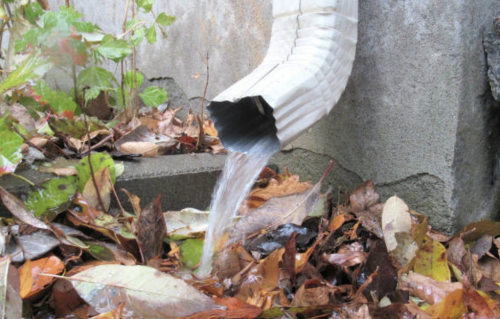
Have you observed that rainwater accumulates around your home’s exterior? Or maybe your home is moist and smelly, but you are unable to identify the underlying problem. At LESSO, we are aware of the significance of safeguarding your house and preventing water buildup in your yard. LESSO Gutter Drain Pipe is the best for waste and rain-water discharge.
Whenever you plan to build a new or adjust an existing hidden downspout drain, be very careful of solid material that can easily infiltrate your buried drainage system and cause future issues. So, we have selected 4 tips to ensure a trouble free buried gutter downspout drain system:-
- Installing a grate-covered capture basin at the inflow site will reduce the amount of big material entering the underground drainage system. Smaller-sized debris that does manage to get past the catch basin’s grate cover will settle to the bottom of the catch basin (instead of inside the pipe), where it may be readily retrieved in the future. This prevents most large-sized materials from entering underground drain systems.
- To minimize water accumulation or damage to your house, a downspout extension helps route water to a specific spot, especially away from the foundation. Additionally, these extensions aid in regulating water flow and averting droplets everywhere that may otherwise result in mould growth and excessive moisture in some areas.
- To preserve the long-term performance of buried drain systems, annually clean the catch basin’s sump base (and any optional filters). The top grate cover on the majority of downspout catch basins can easily be unscrewed, allowing you to effortlessly shovel out or vacuum any settled debris that has accumulated in the catch basin’s sump.
- Grading your yard can help keep rainwater from accumulating. With the assistance of a landscaping professional, you may remodel your garden such that it slopes, allowing water to slowly drain to a larger area away from your home. The grading should ideally slope away from your property at a rate of around one inch per foot. The ground should not slope toward your property, as this would increase the likelihood of rainfall accumulating close to your home.
- One of the easiest and most efficient drainage treatments is Rain barrels. To collect rainwater, install a rain barrel underneath your drainage system. Pour the collected water into the sewage pipes. This prevents rainwater accumulation around your home.
Conclusion
These gutter drainage suggestions will stop water from collecting around your home’s foundation, which can seriously damage your home’s structure, comfort, and safety.
To reduce the risk of mould growth and flooding, spend money on gutters with a good drainage system. You can also use LESSO Gutter Drain Pipe which is the best in China.
Any exterior residential drainage improvements required at your home in the China should be reported to LESSO. We appreciate you visiting our website and look forward to serving you.
FAQs on How to Drain Gutter Runoff
Q:- Should downspouts go into the ground?
A:- No. You run the risk of rainwater backing up into the gutter if they hit the ground. Attempt to have it land 12 inches from the surface. Any higher and you run the risk of getting hit by big water splashes during a downpour.
Q:- How should gutter installation be done?
A:- Hire a professional to ensure the finest and safest outcome. When installing them, you don’t want to take any chances with falls, and you want to make sure they’re firmly fastened.
Q:- What are the advantages of gutter?
A:- Instead of rainwater bouncing off rooftops, gutters collect and distribute it. Most essential, they guard against water damage to your home.
Q:- What exactly is a common gutter system?
A:- It is between four and six inches broad, while wider sizes can be required for larger homes that are bordered by trees. Additionally, a thicker material (around 0.32 inches) lasts longer and is less likely to sag.
Q:- How can I keep mold and mildew from growing in my gutters?
A:- Add gutter guards and remove any buildup of debris and dirt in the gutters. Mold and mildew typically form with poor maintenance and clogging, so remove anything that could stop the water flow.
Interesting Related Article: “Do you need professional gutter cleaning and repair?“

